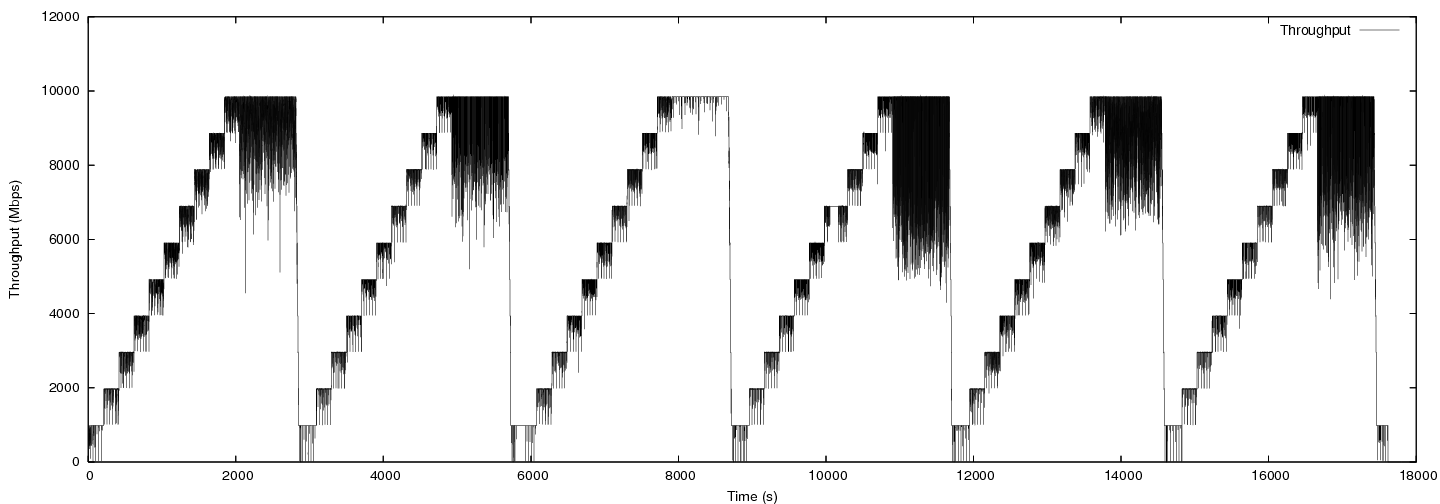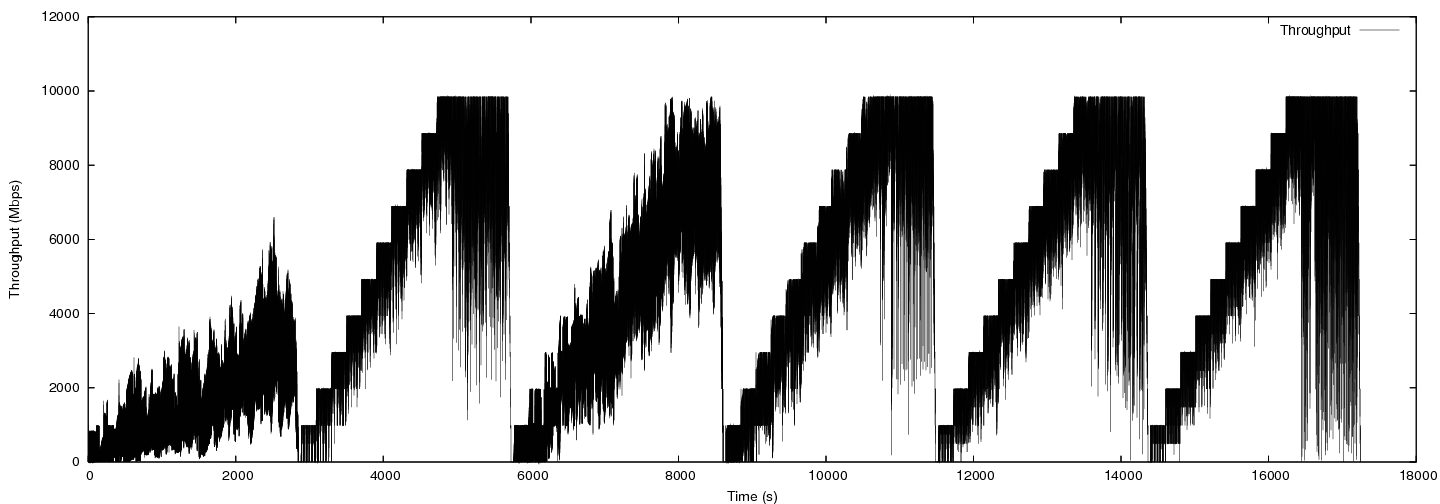

Romaric Guillier, Ludovic Hablot, Yuetsu Kodama, Tomohiro Kudoh,
Fumihiro Okazaki, Ryousei Takano, Pascale Primet and Sébastien Soudan.
We consider the problem of huge data transfers and bandwidth sharing in contexts where transfer delay bounds are required. This report investigates large flow interactions in a real very high-speed network and aims at contributing to high-speed TCP variants evaluation by providing precise measurements. It then also gives an insight on the behaviour of emulated alternative protocols under different realistic congestion and long latency conditions in 10~Gbps experimental environments.
The following graphs correspond to the aggregate throughput of 12 nodes in a dumbbell topology with a 10Gbps bottleneck, measured in the GtrcNET-10 instrument, for a 11ms RTT and a 100ms RTT.


We have explored the real behaviour of TCP variants in the context of grid-like high-speed networks.
We have presented a few metrics that helped us characterise different variants of TCP in various RTT conditions and we have proposed a simple methodology that could be easily reproduced everywhere.
This work also permitted to ensure that the AIST-GtrcNET-10 testbed, even tough we had some technical difficulties with firmwares, is a good approximation of a real testbed like the one we used in Grid5000 with interesting extra functionalities like precise bandwidth measurement and latency emulation.
Finally, we have provided a set of experimental measurements that allowed us to give a first insight of the performance of several TCP variants and to provide a few hints if we were to choose to use one of them in given conditions, according to the RTT or the congestion level, even tough for the moment, there is no universal solution.
In the future, we plan to extend further our work by studying other aspects that could help us to improve and/or find the most suitable solution for a given set of networking conditions and objectives. To do so, we intend to perform the same kind of tests with parallel streams, which is considered to be an ``effective'' solution for bulk data transfers~\cite{hacker04improving} and to conduct the study of the evolution of transfer time according to our parameters as well as the RTT fairness problem in the ``grid context''.
Moreover, we will also need to check the impact of other parameters such as reverse and background traffics to be as close as possible to real networking conditions. Not to forget that we are currently only working on memory to memory transfers and that we will also need to tackle the problem of disk to disk transfers.